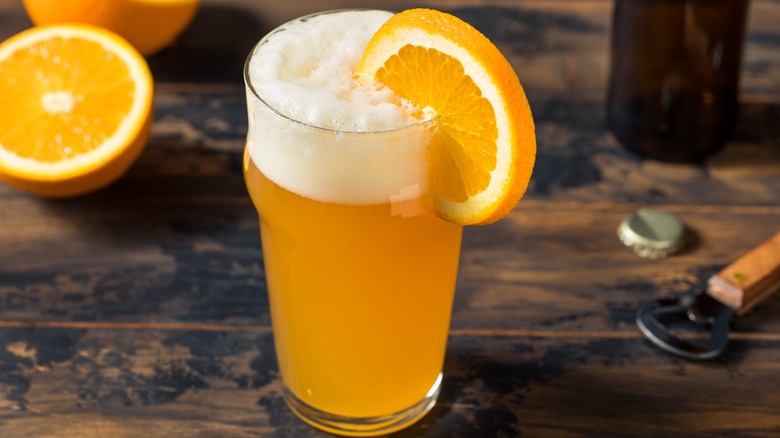The Cloudy Difference Between Witbier And Wheat Beer
Wheat beers come in many different styles and flavors. Take American wheat beers, German krystalweizens, or the cloudy traditional Belgium withier for instance. While witbiers are wheat beers, not all wheat beers are witbiers. Wheat beer is an umbrella term; wits just live under it.
Witbiers are never filtered, hence their hazy appearance in the glass. According to Craft Beer and Brewing, the haze present in most wheat beers comes from wheat proteins. This is due to the fact that the grain bill uses more wheat than non-wheat beer. Withiers are brewed with 20% unmalted wheat while American wheat beers can vary from anywhere from 10% to 35%. Brewers add sugar and yeast back to the beer right before packaging which continues to ferment. This continued fermentation produces carbonation and flavor and adds to the cloudy appearance of witbiers.
Meanwhile, other kinds of wheat beer can be filtered or unfiltered. For instance, there are filtered wheat beers, such as krystalweizen, which is a type of German wheat beer. Unlike its Belgian cousin, krystalweizens are missing the haze and full mouthfeel of an unfiltered wheat beer. Several American wheat beers follow this tradition, like Sierra Nevada Brewing Co.'s and the since-retired Harpoon's Crystal Wheat beers.
The witbier style is known for its hazy appearance and moussy head
Belgian witbiers are noted for their straw yellow color and thick, foamy head that should last until the final sip. According to the Beer Judge Certificate Program, witbier should feel creamy and have a medium body in your mouth, which comes from skipping the filtering step. The solids you see floating in your glass contribute to the flavor and creamy mouthfeel common to witbiers.
To retain the original taste profile, brewers still use traditional spices and herbs that were once used to balance sweet malts. Modern brewing techniques employ hops to balance the sweet, malty notes now, but they should highlight the spice, never overshadow it. Belgian yeasts also contribute to witbier's unique flavor profile, which highlights cloves and fruit, not unlike Blue Moon beer.
Filtered krystalweizens sometimes get a bad rap for taking what's unique and good about wheat beers – the haze and full body with a long-lasting head — and filtering it out. They still taste and smell like a wheat beer, but they're missing the thing that makes wits special. However, krystalweizens are a good stepping stone for those who are put off by the heft and haze of withiers.

